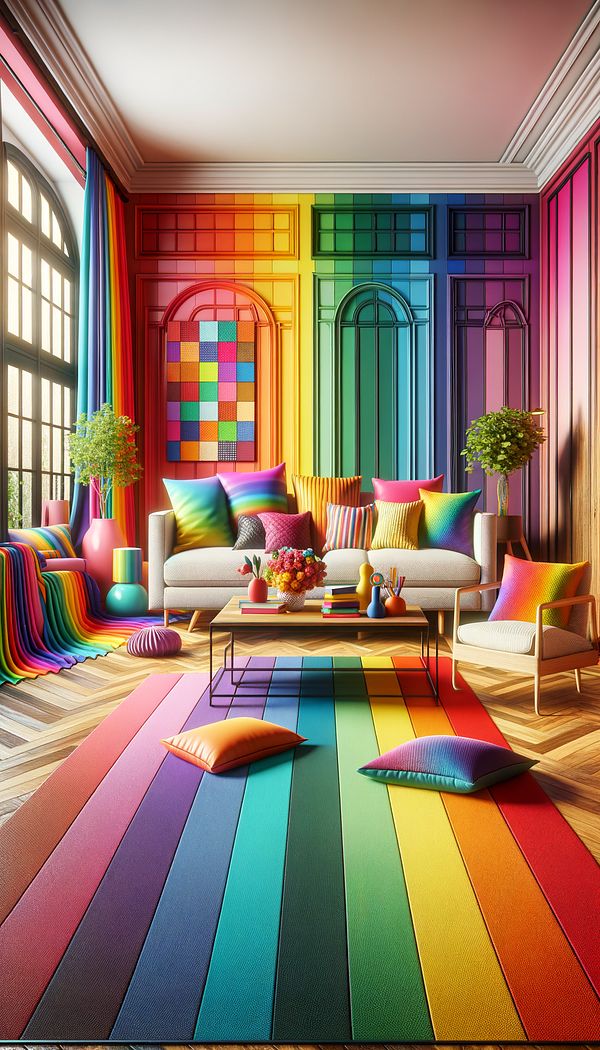What is Polychrome?
Polychrome refers to the practice of decorating architectural elements, sculptures, or artworks in a variety of colors.
Description
Polychrome is a term derived from the Greek words 'poly,' meaning 'many,' and 'chroma,' meaning 'color.' This practice involves the use of multiple colors in the decoration of interiors, exteriors, and artistic or architectural elements. In interior design, polychrome can manifest through painted surfaces, multi-colored fabrics, varied color applications on furniture, and colorful decorative objects.
Historically, polychrome decoration was a significant aspect in many cultures and periods, such as ancient Greek and Roman architecture, where buildings and sculptures were brightly colored, contrary to the common misconception that they were monochromatic. In more recent times, polychrome has been embraced in various design styles, including Art Deco, Victorian, and Contemporary, showcasing the timelessness and versatility of using diverse colors to enhance aesthetic appeal and create dynamic spaces.
Understanding and applying polychrome in interior design requires a keen eye for color coordination, balance, and the ability to combine various hues and shades in a way that complements the overall design theme. It is an expressive approach that can add depth, interest, and vibrancy to a space.
Usage
In a modern living room, polychrome can be applied through a vibrant, multi-colored rug that ties together the various hues found in the room's furniture, artwork, and decorative accessories. In a historical context, it might be seen in the restoration of ancient sculptures, bringing them back to their original, colorful state.
FAQs
-
How does polychrome differ from monochrome?
Polychrome incorporates multiple colors in its design, creating a vibrant and dynamic look, while monochrome focuses on variations of a single color, offering a more subdued and cohesive appearance.
-
Can polychrome be used in any interior design style?
Yes, polychrome can be adapted to fit any interior design style, from classic to contemporary, by carefully selecting and combining colors that align with the desired aesthetic.
-
Is polychrome suitable only for bold designs?
No, polychrome can be tailored to any level of boldness, from subtle and nuanced to vivid and striking, depending on the choice and intensity of colors used.
Practical Application
When incorporating polychrome into a space, start with a base or neutral color to anchor the design. From there, add layers of additional colors through furniture, textiles, wall treatments, and decorative items. Consider the emotional impact of each color and how they interact with each other to create a harmonious or intentionally contrasting palette. Using color theory can be particularly helpful in achieving a balanced and aesthetically pleasing polychrome design.
-
Furniture Types599 articles
-
Decorative Techniques322 articles
-
Decorative Objects240 articles
-
Color & Patterns154 articles
-
Textiles & Upholstery252 articles
-
Barrel ChairA barrel chair is a type of armchair that features a semi-circular back that resembles the shape of a barrel.
-
AcroteriumAn acroterium is an ornamental pedestal or statue located at the apex or corners of a building's roof.
-
French ProvincialFrench Provincial is a style of interior design characterized by its rustic yet elegant appearance, originating from the provincial towns of France.
-
PelmetA pelmet is a framework placed above a window, used to conceal curtain fixtures.
-
Floral PatternA design motif featuring representations of flowers, plants, and foliage.
